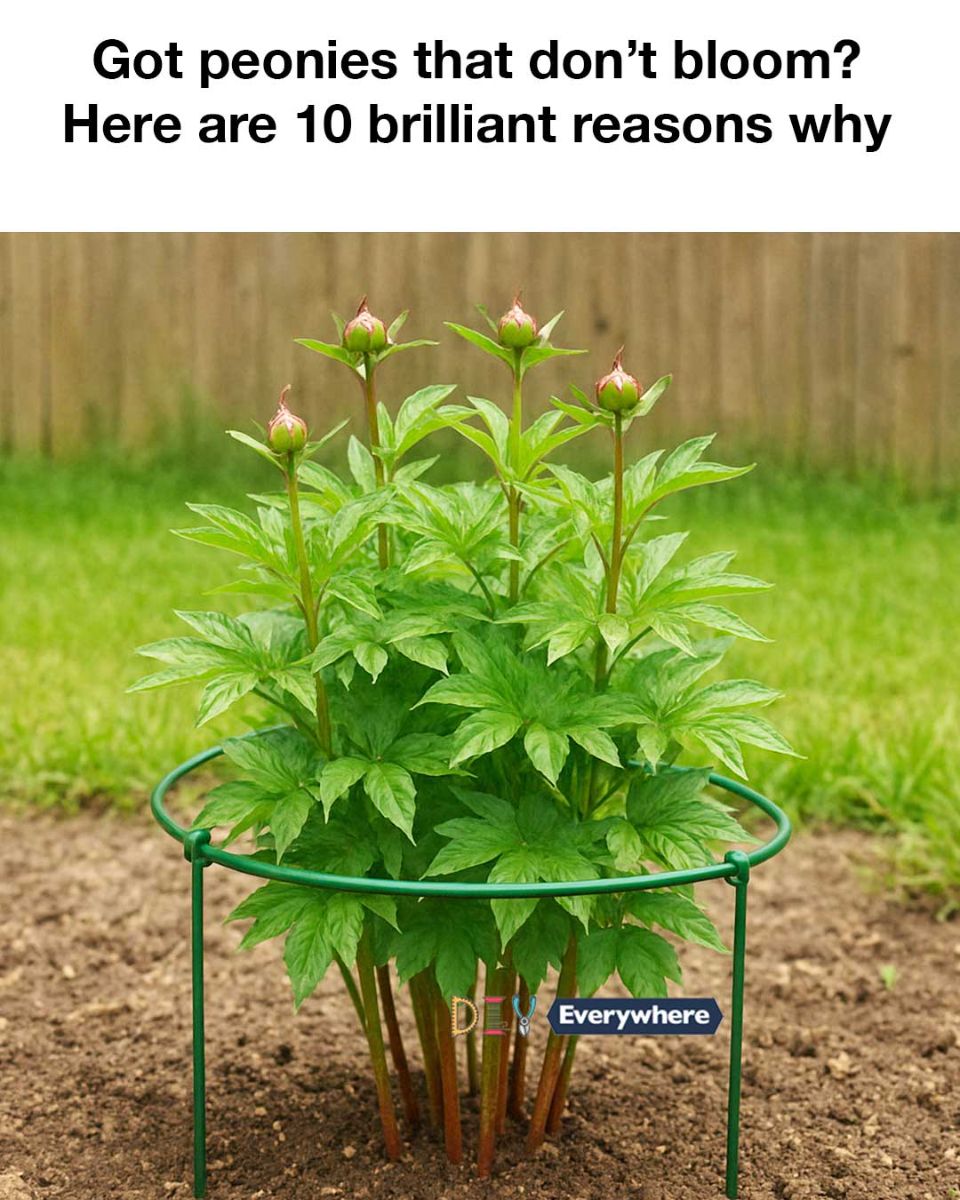ADVERTISEMENT
Peonies benefit from a balanced fertilization regimen. A lack of essential nutrients can lead to poor blooming. Applying a balanced fertilizer in early spring, just as the shoots begin to emerge, can provide the necessary nutrients. Avoid over-fertilizing, especially with high-nitrogen fertilizers, as this can promote foliage growth at the expense of blooms.
Reason 5: Overcrowding and Lack of Space
Peonies need space to grow and spread. If they are planted too closely together, they may compete for resources, leading to reduced blooming. Over time, peonies can become overcrowded and may need to be divided. Dividing peonies every few years can rejuvenate the plants and encourage better blooming.
Reason 6: Incorrect Pruning Techniques
Pruning peonies requires careful timing and technique. Cutting back peonies too early in the fall can remove the energy stored in the foliage that is needed for next year’s blooms. It’s best to wait until the foliage has died back naturally before cutting it down. Additionally, deadheading spent blooms during the growing season can help redirect energy back into the plant.
Reason 7: Pest and Disease Infestation
Pests and diseases can hinder peony blooming. Common pests include aphids and thrips, while diseases such as botrytis blight can damage buds and foliage. Regularly inspecting plants and using appropriate pest control measures can help keep peonies healthy. Ensuring good air circulation and avoiding overhead watering can also reduce the risk of disease.
Reason 8: Environmental Stress Factors
Environmental stressors such as extreme temperatures, drought, or excessive moisture can affect peony blooming. Peonies need a period of cold dormancy in winter to bloom well in spring. Mulching can help protect them from temperature fluctuations. Ensuring consistent watering, especially during dry spells, can also support healthy growth.
Reason 9: Age and Maturity of the Plant
Peonies take time to mature and may not bloom in their first few years. It’s common for newly planted peonies to take 3 to 5 years to establish and begin blooming. Patience is essential, and providing consistent care during this period will help them reach their full potential.
Reason 10: Wrong Peony Variety for Climate
Different peony varieties have varying climate preferences. Some may not be suited to the local climate, affecting their ability to bloom. It’s important to choose varieties that are well-adapted to your region’s climate. Consulting with local nurseries or extension services can provide guidance on the best varieties for your area.
Conclusion and Summary of Solutions
Addressing the reasons why peonies might not bloom involves understanding their specific needs and adjusting care practices accordingly. Ensuring adequate sunlight, proper soil conditions, and correct planting techniques can make a significant difference. Regular maintenance, such as dividing overcrowded plants and managing pests, also supports healthy blooming. By taking these steps, gardeners can enjoy the full beauty of peonies in their gardens.
